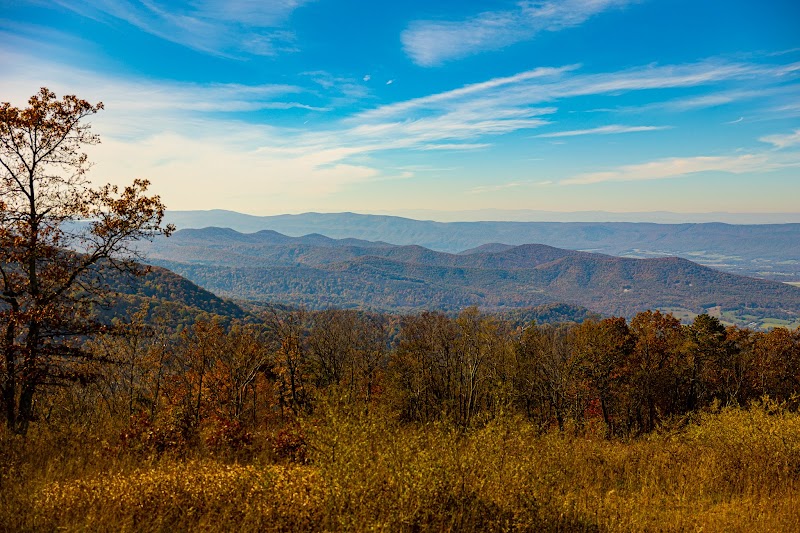
Tracing the Legacy: The History and Evolution of George Washington National Forest
George Washington National Forest is a testament to early 20th-century conservation efforts that unified scattered forest lands into one vast protected wilderness. Journey through its rich history, from the Weeks Act to modern management, and learn how this forest became an enduring refuge for adventurers and nature lovers alike.
Plan for Weather Shifts
Mountain weather can shift suddenly—pack layers and waterproof gear to stay comfortable and safe in changing conditions.
Stay Hydrated and Fueled
Bring plenty of water and energy-rich snacks, especially for longer hikes where access to potable water might be limited.
Use Durable Footwear
Firm hiking boots with good ankle support will help you navigate uneven terrain and forest trails rugged with rocks and roots.
Respect Wildlife and Flora
Keep a safe distance from animals and avoid disturbing plants; these woods are home to sensitive and protected species.
Tracing the Legacy: The History and Evolution of George Washington National Forest
Tracing the Legacy: The History and Evolution of George Washington National Forest
George Washington National Forest stands as a rugged expanse of eastern American wilderness shaped by strategic foresight and conservation resolve. Born from the Weeks Act of 1911—a landmark federal law that authorized the government to purchase and preserve forest lands in the eastern United States—the forest's origins begin amid patchworks of smaller holdings scattered across Virginia's mountains.
Initially established on May 16, 1918, as the Shenandoah National Forest, it united separate tracts including the Natural Bridge and Massanutten areas under one federal umbrella. This consolidation transformed fragmented woods into an interconnected expanse, setting the stage for what would become one of the largest protected forest lands on the East Coast.
Fast forward to 1932, and the forest was rechristened in honor of the nation's first president, George Washington, a recognition of his ties to Virginia and his leadership at a time when American conservation was gaining traction. Just a year later, the Natural Bridge National Forest was incorporated into George Washington National Forest, folding in more terrain and resources.
The narrative continues with the creation of Jefferson National Forest in 1936, assembled from parts of the George Washington and Unaka National Forests and other lands. This move reflected the evolving management priorities to oversee these regions more effectively.
The pivotal administrative decision came in 1995, when the George Washington and Jefferson National Forests were combined, streamlining the stewardship of nearly 1.8 million acres. Today, these forests offer a vast playground of rugged ridges, silent streams, and wild refuges, shaped by nearly a century of deliberate conservation.
For modern visitors, the history of George Washington National Forest frames every trek and campsite. The forest itself feels like a wilderness fiercely maintaining its character—ancient trees that dare you to respect their domain, ridges that push you onward with panoramic views, and rivers that whisper stories of stewardship and persistence.
Whether you're hiking deep trails, fishing for native brook trout, or simply absorbing the quiet majesty, understanding this forest's layered history enhances the adventure. It’s a reminder that this landscape is not only a natural refuge but the legacy of early conservation efforts that still protect these woods for generations of explorers to come.
Nearby Trips
All Adventures
Boat Charters
Water Activities
Adventures near Harrisonburg, Virginia
Discover the unique and memorable adventures that make Harrisonburg, Virginia special.
Frequently Asked Questions
What historical laws influenced the creation of George Washington National Forest?
The key legislation was the Weeks Act of 1911, which allowed the federal government to purchase lands for establishing national forests in the eastern U.S., paving the way for land acquisitions that formed this forest.
When was the forest officially named George Washington National Forest?
The forest was renamed from Shenandoah National Forest to George Washington National Forest in 1932 to honor the nation’s first president and his connection to Virginia.
How large is George Washington National Forest today?
Combined administratively with Jefferson National Forest since 1995, the George Washington and Jefferson National Forests encompass nearly 1.8 million acres across Virginia and adjoining states.
What types of recreational activities does the forest support?
The forest offers hiking, camping, fishing, horseback riding, wildlife viewing, and hunting in season, with trails and facilities catering to a variety of interests and skill levels.
Are there any notable conservation efforts or rules visitors should know?
Visitors should follow Leave No Trace principles, respect seasonal trail closures, and avoid disturbing wildlife or plants to protect the forest’s sensitive ecosystems.
What makes the combination with Jefferson National Forest significant?
The administrative merger in 1995 streamlined management across a contiguous protected area, improving resource coordination for conservation and recreation.
Recommended Gear
Hiking Boots
Provides ankle support and traction on uneven, rocky trails common in the forest.
Water Filter or Purification Tablets
Ensures access to clean water from streams or rivers during longer outings.
Layered Clothing
Adjusts to temperature swings and weather changes, essential for comfort and safety.
Insect Repellent
Protects against mosquitoes and ticks prevalent especially in warmer months.
Local Insights
Hidden Gems
- "Pebble Hill Overlook - A less crowded vantage point offering sweeping views of the Blue Ridge Mountains."
- "Stony Man Cliffs - A rugged outcrop known for its geological formations and quiet hiking spots."
Wildlife
- "Eastern black bear"
- "White-tailed deer"
- "Native brook trout"
- "Pileated woodpecker"
History
"The forest reflects a century-long American conservation effort, exemplifying early 1900s federal policies aimed at protecting eastern forestlands after extensive logging and land depletion."
